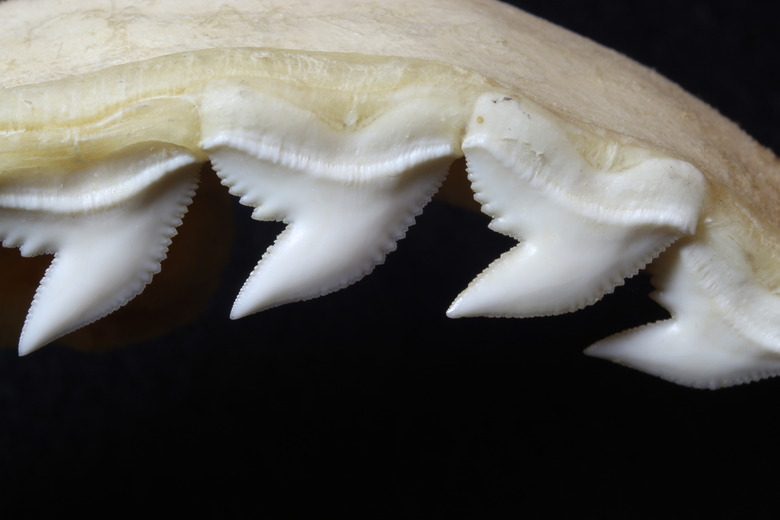How To Hunt For Shark Teeth In Nags Head, North Carolina
North Carolina's Outer Banks are treasured for rolling sand dunes and wide, beautiful beaches. Lurking among the waves and sand, however, are tiny treasures that hint of the danger beneath the sea: shark teeth. The jagged gems are fresh from the ferocious animals swimming nearby. Finding them is a joy for shark tooth collectors, and an unexpected surprise for those who normally stick to seashell hunting. Hunting for shark teeth is an activity that promises new adventure in a land where historic lighthouses and nearby Kitty Hawk claim most of the attention.
Instructions
Step 1
Buy a low-cost shell scoop. This is a long-handled tool with a sieve at the end, perfect for sifting out small pieces from wet sand. The scoop's long handle will come in handy when you're digging beneath the waves and will keep you from getting too wet. These tools can be purchased online and are also widely available in Nags Head's many beach-gear stores.
Step 2
Go to the beach at low tide. When the waves recede, you are privy to exposed shell beds that most beach goers don't see during the day. You can find the times for low and high tides in the newspaper, on the Internet or at the lifeguard stand.
Step 3
Head for the largest areas of exposed shell beds. These may be uncovered during low tide, or just below the surface where the waves are crashing. They will have the largest concentration of treasures pushed ashore by the waves.
Step 4
Dig into the shells or sand with your scoop. Sift through for triangular-shaped pieces that resemble teeth. On closer inspection, you will be able to discern shells by their color and smooth edges. Remember that Nags Head is rich in clams, and gray-colored clam shell pieces may fool you into thinking they are shark teeth.
Step 5
Inspect potential pieces for signs of real teeth. Shark teeth are usually shaped like cake wedges or t-shaped. They have jagged edges on the bottom and smooth tops.
What did you find?
Step 1
Know what you are looking for. Newer shark teeth are whitish in color, while fossilized teeth are dark gray or black.
Step 2
Determine the size of the shark whose teeth you have found. You can do this by measuring the length of the tooth in inches. Multiply the tooth length by 10 to find the shark's length in feet.
Step 3
Determine the kind of shark whose teeth you have discovered. Wide, flat teeth belong to bottom-dwelling sharks. Wedge-shaped teeth belong to aggressive sharks such as great whites, bull and tiger sharks. Skinny teeth come from sharks that need to catch slippery fish, such as mako sharks.
Things Needed
- Shell scoop
- Sunblock
- Sunglasses
- Hat
TL;DR (Too Long; Didn't Read)
Once you have found your shark teeth, you will want to think of how to display them. Some people like to wire them into jewelry. Others choose to mount the collectibles on display boards.
Warning
A day at the beach can mean lots of sun exposure! Remember to wear a hat, sunglasses, and plenty of sunblock. A successful day of shark teeth hunting may require hours of careful searching, so you may need to reapply sunblock as it wears off in the water.
References
Cite This Article
MLA
Roland, James. "How To Hunt For Shark Teeth In Nags Head, North Carolina" sciencing.com, https://www.sciencing.com/hunt-nags-head-north-carolina-7727892/. 13 March 2018.
APA
Roland, James. (2018, March 13). How To Hunt For Shark Teeth In Nags Head, North Carolina. sciencing.com. Retrieved from https://www.sciencing.com/hunt-nags-head-north-carolina-7727892/
Chicago
Roland, James. How To Hunt For Shark Teeth In Nags Head, North Carolina last modified March 24, 2022. https://www.sciencing.com/hunt-nags-head-north-carolina-7727892/
